SVEN AUGUSTIJNEN
In the work of Brussels-based artist Sven Augustijnen, we find a concentration on the notion of the portrait. Using a hybrid of genres and techniques, he explores the boundaries between fiction and reality and plays with the viewer’s expectations. Sven Augustijnen studied in Brussels (1992) and Maastricht (1997-1999). His video work is shown in the contexts of both installation and cinema screening. After concentrating his early work on juggling words and texts, exploring the properties of his material, he has been making series of ’portraits’. Augustijnen plays with different ways of approaching that are basic given: docu-soap, human-interest, fake documentary and home movies are juxtaposed and intermixed. The artist misleads the viewer, who becomes a voyeur of acts in which fiction and facts are not easily disentangled. In the video L’Ecole des Pickpockets (2000), for example, he stages a school for pickpockets. The viewer follows how a layman is trained in a few hours to be a great talent. In the false documentary, Le Guide du Parc (2001), a man leads us through the royal park of Brussels, guiding us through its history and the lively gay scene there. In a bitter-sweet, humorous form, Augustijnen again plays with truth and fiction. In portraying his ’non-fictional’ subjects - artist Willem Oorebeek, Ernesto, the young hiphop dancer, or the Les Ballets C. de la B. dance company - Augustijnen takes a very subjective position, never keeping aloof or on the surface, but always showing himself as highly sympathetic towards his subjects. He does this in a measured fashion, never imposing himself and seldom intervening. It seems that in these documentaries, the artist knows his protagonists so well that they display themselves in front of the camera in a self-assured way, without hesitation. Augustijnen moreover employs a down-to-earth, sober style, putting things into perspective with irony and humour.
Besides producing video films, he is also deeply concerned with the artistic reality and topical events. A good example would be the publication of Tijd Culture, ’Edition spéciale/Speciale editie, Art Brussels 2002: Le dernier nouveau centre d’art contemporain de Bruxelles/Het Laatste Nieuwe Centrum voor Hedendaagse Kunst in Brussel’, a bilingual newspaper that appeared on May 1st, 2002, and was publicly distributed by various channels. In this ironic publication, Augustijnen pretends to respect the codes and patterns of a newspaper interview, holding a good long discussion about the difficult position of contemporary art in the Belgian capital, while at the same time kicking against the rut into which the national media have fallen. Augustijnen’s work can be summarised as subjective in the literal sense of the word. He walks the boundary between fiction and reality, distorts norms and is keen to break through clichéd roles and expectations.
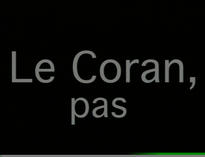
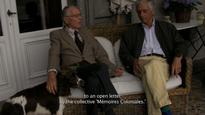
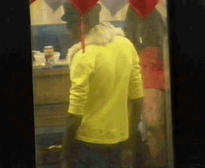
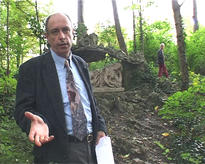
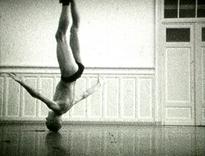
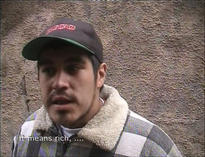
- ° 1970 Mechelen (Belgium). Lives and works in Brussels.
-
EVENEMENTEN
- Sven Augustijnen - Une femme entreprenante
- ART BREAK CANTINE #2
- information days catalogue
- Gathering
- Erfgoeddag 2012: Helden uit de schaduw/ Heritage Day 2012: Heroes
- Tim Etchells - Order Cannot Help You Now
- C12 x ARGOS = 30
- STEP UP! Belgian Dance and Performance on Camera 1970-2000 - Chapter 2
- argos @ 16th Line Gallery
- Zona de mestizaje - Cine y Vídeo de Artistas Belgas
- Sven Sterken: New Stories for Brussels. Strategies for a dissident Imagination of the City
- New Stories for Brussels. Strategies for a Dissident Reading of the City. On the image of the Belgian capital in recent video art.
- Sven Augustijnen - Brussels Topologies
- COM nu TIES seuils/drempels/thresholds - A duoshow with ISELP
- Ciclo Vídeo Belga
-
At view in the media library
WERKEN- De Kunstberg... Stad op de helling
- Ernesto "C’est difficile de voir l’avenir. Je ne suis pas à demain. Je le verrai petit à petit."
- François
- Iets op Bach
- Johan
- La tristeza complice
- L'Ecole des Pickpockets
- Le Coran, ça je ne connais pas
- Le Coran - L'Holocaust - Le jour de gloire
- Le Guide du Parc
- Le jour de gloire est arrivé
- L'Holocaust n'est qu'un detail dans l'Histoire
- Mission Mont des Arts
- Spectres
- Une femme entreprenante